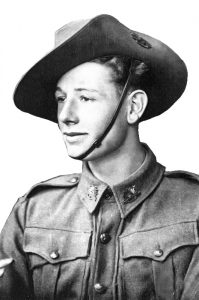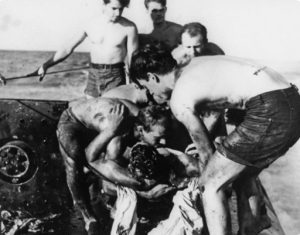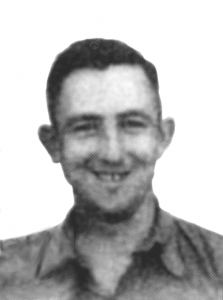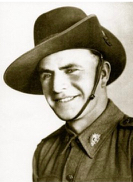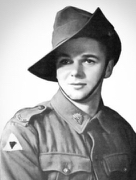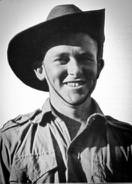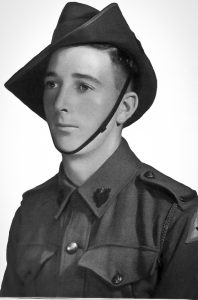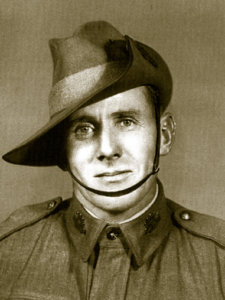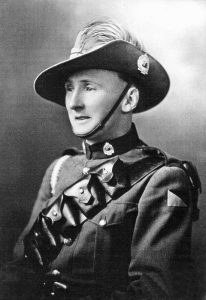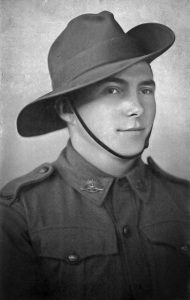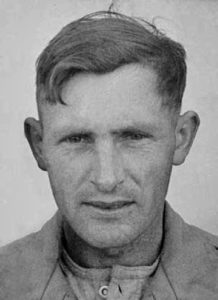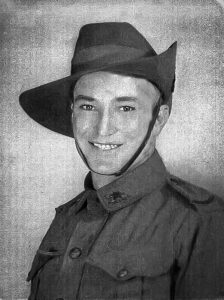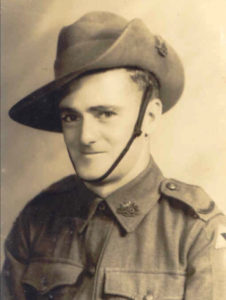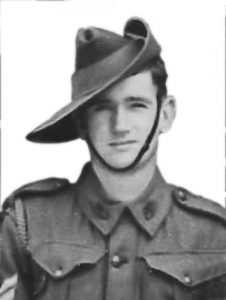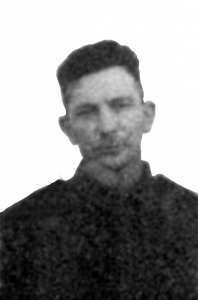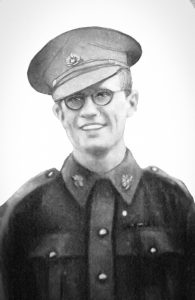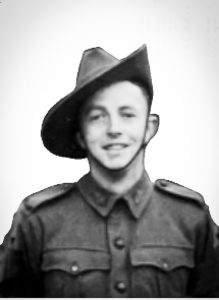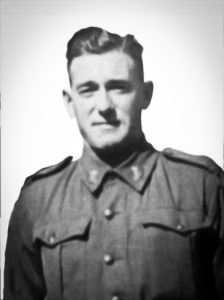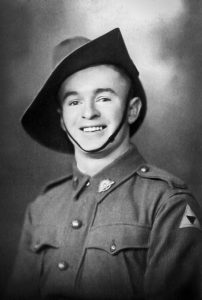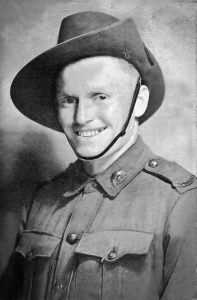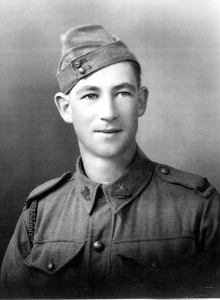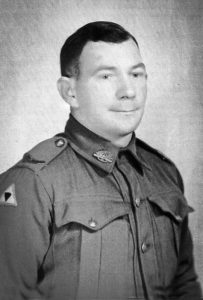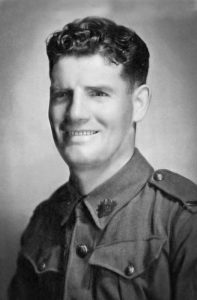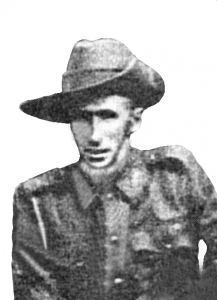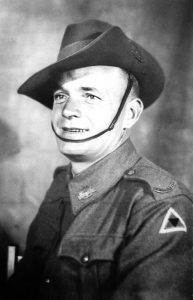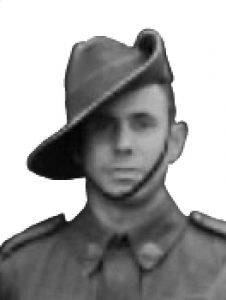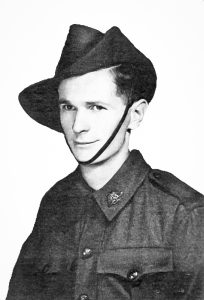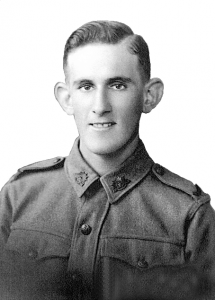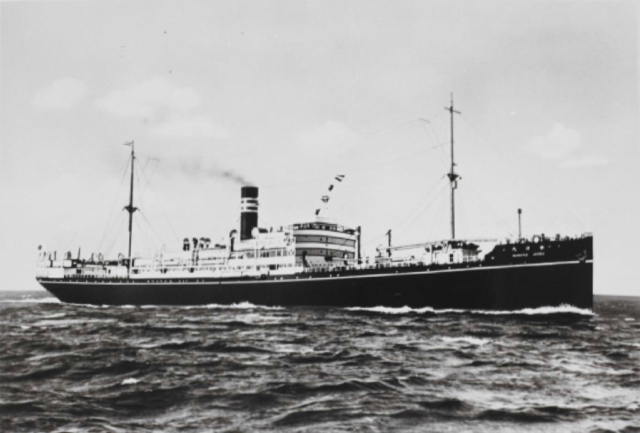
9,419 ton ‘Rakuyo’ Maru was built 1921 by Mitsubishi Company at Nagasaki.
Initially entrained from Thailand via Bangkok (where they also worked for a few days) to Saigon in French Into China, the Rakuyo Maru work party arrived in Saigon where they worked for several months around the wharves and the city, accommodated at the former French Foreign Legion quarters – a huge improvement from the attap huts on the line where they slaved long hours, had little food and no medicines.
Several times the Japanese prepared them to board their ship to Japan, after waiting around all day the men were returned to camp. Finally the Japanese decided it was too dangerous to sail with the American blockade and ordered them to travel to Singapore by rail.
The POWs had in comparison found work and living conditions in Saigon far better than when working on the railway. Also their food rations became more generous. They now had to make their way to Singapore.
Arriving by train Singapore on 4 July 1944 from Saigon, the men designated for ‘Rakuyo’ Maru were accommodated at River Valley Road Transit Camp – and remained here until 3 September 1944 when it was announced ‘Rakuyo’ Maru was ready to board. In the meantime, POWs were taken on daily work parties around the docks and some worked on the excavation of a dry dock opposite Pulau Damar Laut, otherwise known as Jeep Island.
Several 2/4th men were sent to Changi Gaol Camp hospital and were unable to proceed to Japan. Murray Cheyne on 14 July 1944 was hospitalised suffering from malaria and pneumonia. On regaining his health, because he was a Pay Sergeant he was later transferred to Changi Administration 28 January 1945. Basil Frost was hospitalised with an infected leg.
When it was time to embark, it was found the ship did not have sufficient room to take Australian Kumis No.’s 35-40. No. 40 was deleted from the passenger list – 2/4th men in No. 40 included: Vic Barnett, Bill Cake, Harry Lucas, Albert Hambley and Les Holtzman – they later sailed with ‘Awa’ Maru to Japan end of December 1944 and were very lucky indeed!
On 4 September 1944, 718 Australian, 600 British and one American (shot down over java) POWs were marched to docks. Earlier attempts saw them sit around waiting until late evening (large numbers of men were unable to march and others were sick with usual tropical diseases) before being marched back to their accommodation at Transit Camp.
Many doubted they would actually see a ship on this particular day. The same had occurred in French Indo China when they were ordered to march to the docks and board their ship on several occasions only to later return to their accommodation.
But there it was – ‘Rakuyo Maru‘ moored at the docks!
Many POWs were familiar with the ship as they had been loading her for the past weeks with raw rubber, copra, tin and scrap metal.
The men were herded below decks where conditions were very crowded, dark and stifling hot in the Singapore heat. A tense standoff had taken place with the Japanese when a large number of POWs refused to go below into the over-crowded hold. They were warned there would be no water and food until they did so and situation became hostile.
Eventually the Japanese agreed with senior POWs officers that two thirds of the men would go into the hold. The remaining third could remain on deck but must not impede the movement of crew.
Prodded by rifles with bayonets and the usual slapping and kicking, two-thirds of the men squeezed themselves below. Sitting back-to-back and knee-to-knee the men including the sick, settled down and waited in the dark hold sweating in the appalling conditions.
On deck and below there were numerous injuries from earlier hostilities – sore heads, bruises, cuts and broken ribs. They tried to maintain a path to the primitive but hygienic latrines – a slatted box lashed with rope to the port rail.
On 4 September 1944 ‘Rakuyo Maru‘ with 1318 POWs moved off just before dusk and soon dropped anchor in the roads outside the harbour. They remained in the roadstead for another 36 hours. Those on deck were able to see the lights of Singapore and enjoyed the faintest of breezes. For those below there was no relief, it must have been horrific trying to sleep sitting with heads on their knees, listening to the sick and injured cries and moans, the air filled with fear and the growing stench of so many bodies.
At about the same time ‘Kachidoki’ Maru with 1500 British POWs onboard sailed out of Singapore to join the convoy (also sunk by American Submarines).
There was no food ration this night. Whatever food they had been provided in the early morning was supposed to be for the day – however rice would not keep in the heat.
During the night ‘Rakuyo Maru’ joined a convoy of two tankers and further three transports to form two lines headed by a light cruiser, flanked by two destroyers and followed by a corvette and sailed away from Singapore.
It was nearer midday before POWs received their small serving of food. They each received a small mug of rice with a tiny drop of stew! There was chaos and queue jumping by ravenous men. They were advised they would receive half a pint of tea later in the day. Cooking facilities were absolutely inadequate. The cooks had use of two kwalies for more than 1,000 men, worked in a lean-to cookhouse made of corrugated iron at the ship’s stern, exposed to weather and open deck. There was no way the POWs would receive more than two meals per day in daylight hours with two kwalies cooking for 1300 men. (There would be no fires at night for cooking).
Australians manned the cookhouse and eventually the British conceded the rice was well cooked. Initially the British felt outsmarted by the Aussies who had manoeuvred themselves into the cookhouse ahead of the British. By the second day they all received a pint of tea each man and the British conceded the Aussies were doing well. The prisoners soon settled into a routine with food distribution points, pathways to latrine, etc. The men knew if they created any trouble everybody would be jammed into the hold and hatches closed.
Those on deck faced stinking hot conditions during the day, but were rewarded with cooler nights. For those in the hold it was otherwise and they were glad of a turn upstairs. By the fifth day men were desperate for water for cleaning themselves. Conditions soon became unsanitary. The Japanese agreed for bath parades! 5-6 men at a time allowed on deck and the use of a pump for 5 minutes. It was heaven beneath the 3-foot torrent of water whilst they splashed and rolled about.
Drinking water had become dangerously short and that night, thankfully the heavens opened up! Those on deck were happily drenched and filled their drink containers and from below came the hordes taking turns to do likewise. On deck, temperatures plummeted and the men with their sodden belongings gathered together to keep warm until morning when the sun was again out.
On the morning of 6th September the ‘Kachidoki Maru’, two passenger cargo vessels, two tankers and several escorts joined them.The POWs felt reasonably safe as the convoy forged on in favourable conditions accompanied by one cruiser, 4 destroyers and 2 corvettes.
The convoy headed directly northeast for the Formosa Straits.
The following day the convoy approached the danger area of the voyage – midway between Hainan Island and Luzon in the Philippines where the American submarines were concentrated.
Extra lookouts were evident on the foredeck and the bridge and the gun crews practiced on an antiquated artillery piece in the bow. Tension was high!
At this point (according to Ghosts in Khaki) the convoy was joined by three empty freighters and three frigates. The convoy became three columns of ships with tankers in the centre and ‘Rakuyo Maru’ becoming ‘tail end charlie’ at the right rear.
There was a hunt on for life jackets and ample stock was found on ‘Kachidoki Maru’ however 25% or more of POWs on ‘Rakuyo Maru’ missed out.
Survivors on board from HMAS Perth (taken POWs in Java after their ship sank) were active in spreading the message of ‘abandon ship survival’. They found the life jackets, wooden life rafts and advised how to launch them. They also devised a plan to empty the holds quickly. The Perth survivors prepared those around them as much as was possible under the conditions.
On the evening of 11th September two 2/4th Machine gunners Alf and Wally Winter had been out scrounging and this incident proved to be a minor crisis, taking minds off the torpedoes!
“We broke a lock and got into a hold. We pinched a small bag of sugar, got it back to the hold and split it up amongst our Kumi (platoon). Everybody gulped it down by the handful. The Japs were onto the theft pretty quickly and announced that if they couldn’t find the culprit everyone would be punished.” …………Alf Winter (from Ghosts in Khaki Page 310)
The decision was left until the next morning – and the ship eventually settled down. As the ship sailed on the number of men sleeping on deck grew to many 100s of POWs on the forward deck. The decision of the missing sugar was never made and was taken over by a much greater crisis.
A little before midnight of the 6th day, on 12 September the convoy was attacked. For those on deck the night was dark, as the moon had not risen. The previous quiet evenings had lulled them into a sense of safety and tranquillity. Startled awake by the roar of activity, POWs on deck saw the destroyer escort charging around with lights blinking. There was a huge flash of light, an explosion or two, and the destroyer was gone.
Pandemonium followed, bells ringing, Japs racing everywhere and some even jumping into the lifeboats. Terrified men heaved themselves out of the holds. For those on deck they could see one of the tankers ablaze, and lighting up the night. ‘Rakuyo Maru’ was veering evasively right to the starboard. There were more explosions. Alarm bells continued ringing amidst the hysterical cries from men everywhere and from below, they could hear the scurrying of crew feet in a night which had suddenly gone mad. The POWs did not know what was to happen, or what they were to do as their ship rocked about.
The panicked guards and crew began to force the POWs back down the hold. A young Australian Officer took command. He confirmed the convoy had been attacked and two ships hit and advised the men to sit quietly and settle down. Nothing further happened and the convoy again settled down.
The ship remained on an even keel and control returned. The ‘Rakuyo Maru’ was drawing away from the convoy and they thought they would be all right. The terrified men had willed their ship to find safety away from the convoy into the safety of darkness. They were suddenly aware the’ Rakuyo Maru’ was now alone. One cannot begin to imagine what was going through their minds of those hundreds of terrified men below decks.
At 5.30am POWs on deck saw a tanker not too far away go up in flames joined a few minutes later by a freighter. It was now the ‘Rakuyo Maru’s’ turn. Watchers at the rails yelled “they’re going to hit” as two torpedoes streaked toward their ship. One torpedo went into the engine room bringing the ship to an abrupt halt with a loud explosion and a sheet of flame and second torpedo hit below where it was seemingly cushioned by the cargo of rubber bales or even missed its target.
A massive wave poured over the forecastle. POWs on deck were thrown violently about as they were pounded by boiling and hissing seas. Many thought the ship had already sunk. Next the water had gone leaving men confused, spluttering and blundering about the deck, their meagre possessions washed overboard.
They had hung on to avoid being swept overboard. Harry Bunker said, “It was like being hit by an enormous dumper at Cottesloe beach. I was all ends up scraping along the deck”. Harry Pickett said he had to hang on to stop being swept over the side. (from ‘Ghosts in Khaki P. 311)
You can read further about Harry Pickett
There were continual splashes as men jumped into the water. For those on-board there was further panic with the Japanese seemingly not knowing what to do and taking longer to do it. However the Japanese crew didn’t waste time appearing in life jackets (some POWs managed to grab one from their supply) and several rafts hit the water. Before everybody was out of the hold, the lowered lifeboats loaded with crew were pulling away from ‘Rakuyo Maru’.
The panicked POWs in the holds had immediately scrambled for the ladder. On deck, there were some savage confrontations between POWs with years of pent up hatred and a few of Japanese still on board. It appeared the majority of men had jumped overboard. In the reappearing moonlight those in the water desperately sought floating cargo and debris for support. Especially those unable to swim.
By now the ship was sitting still. The initial rush to jump overboard slowed down.
Some POWs returned to their ship. Some with leadership and survival skills began throwing overboard rafts and floatable material such as that which could be ripped off the superstructure following the explosion. Chairs, tables, hatch boards, POW cookhouse, oil drums, wooden stairs, etc. – anything which would float. Some of these struck men floating in the water further increasing injuries and deaths amidst the mayhem.
Groups were drawn into the sea of blazing oil from the tanker – unable to make their way to safer waters. For now it was mostly darkness, the unknown, confusion, and shocked voices calling for mates. A few Japanese who found themselves alone and swimming in the water were now facing the prospect of being outnumbered by POWs.
Doug Hampton said, “The Jap frigates were moving amongst the wreckage picking up their own survivors. We had one Jap officer aboard our raft and we were hoping someone would come to collect him and take us too! Small hope, they came for him in a small boat with a Jap in the bow holding a tommy gun. The two frigates then cruised alongside the rafts, the crew lining the rails with guns pointed at us. We thought we were going to get it (be shot) and gave them our thumbs up sign, I think they got the message.” (Page 312 Ghosts in Khaki)
The Japanese boats finally after ramming through wreckage, sinking rafts, breaking up groups and killing men in the water turned away and with the remaining freighter leaving behind a mass of struggling, shocked and injured survivors.
The moon once again disappeared leaving 100’s of nameless men floating in the dark water eager to push away from ‘Rakuyo Maru’ fearing the sinking ship may take them with it. Some men managed to get a place on a few lifeboats or larger pieces of floating debris – nobody wished to remain alone. It would be dawn in a few hours and they hoped to see their situation more clearly.
Phil Beilby, a lucky survivor, was well prepared when he jumped over board having first thrown a hatch cover. He had three canteens of water and a life jacket. He left behind his most cherished possession, his battered clarinet. He was joined by Vic Cross on a large raft.
Alf Winter said “When I jumped I forgot to fold my arms over the life jacket and it came up and cracked me on the chin. I was nearly knocked out and it took some minutes to recover. I finally managed to get on a raft with eight others.
In the first rush, all everybody thought about was getting over the side before the ship sank, but when we realized we had no (drinking) water, we went back on board and collected some water bottles but they had no corks and the water was lost! We got away from the ship as fast as we could.” (from Ghosts in Khaki Page 312)
By early morning the extent of the night’s tragedy was there for all to witness. Many who had clung onto floating debri and craft had died in the night and it was evident many more had little chance of surviving the day. The current was carrying them into the oil covered waters where the tanker had sunk. The oil soon covered everything including the wreckage, the men, their bodies – eyes, ears and mouths. The oil made if impossible for some to hold onto wreckage. They slipped away and didn’t have the strength to swim back.
The heat, despair and their overwhelming thirst began to take hold. Resorting to drinking sea water resulted in death.
Doug Hampton said “People were doing strange things”.
Read further about the US submarines.
Below: crew of Pampanito assisting oil covered POW on board.
Please read story of Cocking – one of 2/4th survivors of ‘Rakuyo’ Maru sinking.
Those who didn’t survive, include Peter Cripps from Northampton.
Vern Trigwell perished, and Harry Bunker was a survivor. Please read their story.
RAKUYO MARU sank 12 Sep. 1944 South China Sea following torpedo attack by USS ‘Sealion.’ ‘Rakuyo’ Maru took 12 hours to sink. On board were 52 POWs from 2/4th Machine Gun Battalion.
11 very lucky POWs survived to be picked up by USS Submarines
3 POWs were picked up by Japanese vessel and taken to Japan (including Climie who survived in the water and was picked up by Japanese vessel, taken to Japan. He was killed during Allied Air raid whilst working as a POW in Japan 13 July 1945 – just one month before end of war.)
38 Men from 2/4th perished in South China Sea, including Gibbs brothers Jimmy and Lacey from Wanneroo.
Read November 1944 Australian Government receiving reports of ‘Rakuyo’ Maru story and devastating news of POW Camp Conditions
WX7905 ANNESLEY, Frederick John (Fred) b. Collie 1926. One of 88 men 2/4th who were AWOL from ‘Aquitania’ when she sailed from Fremantle on 16 Jan 1942 for Singapore. Please read further about this incident which left 2/4th Btn short of 88 well trained machine gunners during battle to save Singapore. Fred was captured with “Blackforce” in Java. Selected to work Thai-Burma Railway with ‘A’ Force Burma, Java Party No, 4 Black Force he sailed from Java to work Burma end of railway for more than 12 months. Selected ‘fit’ by Japanese with ‘Rakuyo’ Maru Party. Fred perished 16 Sep 1944 aged 28. Married with children.
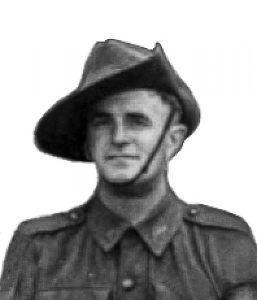 WX9864 BAGGS, Royal James b. 1909 Weymouth, Dorset, England. Fought Singapore ‘A’ Coy 4 Platoon as a cook. Selected at Singapore to work Thai-Burma Railway with ‘A’ Force Burma, Green Force No. 3 Bn where he worked at least 12 months after which he was sent with the POWs in Burma, south to Thailand. He was selected ‘fit’ by Japanese to work in Japan with ‘Rakuyo’ Maru Party. Perished 14 Sep 1944 aged 34.
WX9864 BAGGS, Royal James b. 1909 Weymouth, Dorset, England. Fought Singapore ‘A’ Coy 4 Platoon as a cook. Selected at Singapore to work Thai-Burma Railway with ‘A’ Force Burma, Green Force No. 3 Bn where he worked at least 12 months after which he was sent with the POWs in Burma, south to Thailand. He was selected ‘fit’ by Japanese to work in Japan with ‘Rakuyo’ Maru Party. Perished 14 Sep 1944 aged 34.
WX8720 BAKER, Arthur Joseph “Joe’ b. Coolgardie 1914. Family lived Coolgardie. Driver with HQ COY and fought Singapore. Selected to work Burma end of Thai-Burma Railway with 3,000 POWs ‘A’ Force Burma, Green Force No. 3 Btn. Remained on rail link more than 12 months. ‘Rakuyo’ Maru. Perished 12 Sep 1944 aged 30.
Please read about Coolgardie boy Joe Baker
WX8682 BAKER, William Robert Samuel (known as Bob or WRS) b. 1919 Esperance. Formerly Norseman. Captured with “Blackforce” Java. Selected to work Thai-Burma Railway with ‘A’ Force Burma, Java Party No, 4 Black Force. Worked Burma end of railway more than 12 months. ‘Rakuyo’ Maru. Perished 12 Sep 1944 aged 25.
WX16390 BELL, Robert Joseph (Bob) b. Perth 1920. Fought Singapore. Selected to work Thai-Burma Railway with 3000 POWs ‘A’ Force Burma, Green Force No. 3 Btn. Worked Burma end of railway more than 12 months. ‘Rakuyo’ Maru. Perished 14 Sep 1944 aged 24.
Eldest son of Robert John and Kate Bell of Pingaring. Bob loved the land and farming. Please read further about his life
WX9326 CARTER, Alfred Henry (Harry) b. 1920 Northam. Formerly Dangin. Fought Singapore. Selected to work Thai-Burma Railway with 3,000 POWs ‘A’ Force Burma, Green Force No. 3 Btn. Worked Burma end of railway more than 12 months. ‘Rakuyo’ Maru. Son of Lewis Basil and Mary Jane Carter, of Dangin. Harry was one of several men of 2/4th who came from around Dangin. Perished 12 Sep 1944 aged 24.
WX4927 CLIMIE, Austin Newman (Aussie) Corp. b. 1907 Perth. Fought Singapore. Selected to work Thai-Burma Railway with 3,000 POWs ‘A’ Force Burma, Green Force No. 3 Btn. Worked Burma end railway more than 12 months. Selected with ‘Rakuyo’ Maru Party to work Japan.
Survived Sinking of Rakuyo Maru – picked up by Japanese vessel, taken Japan. Climie killed 13 July 1945 during an Allied Air Raid at Kawasaki Camp No. 14 D Aged 37.
WX9109 COLQUHOUN, Alexander John (Alex) b. 1906 Midland Junction. Fought Singapore. Selected to work Thai-Burma Railway with 3,000 POWs ‘A’ Force Burma, Green Force No. 3 Btn. Worked Burma end railway more than 12 months. Perished 15 Sep 1944, three days after ‘Rakuyo’ Maru Sank aged 38 (This information would have been passed on from one of the survivors)
WX9092 COUSINS, Arnold Vivian b. 1913 Mt Helena. Fought Singapore. Selected to work Thai-Burma Railway with 3,000 POWs ‘A’ Force Burma, Green Force No. 3 Btn. Worked Burma end railway more than 12 months. ‘Rakuyo’ Maru. Perished Perished 14 Sep 1944 aged 30 years. (Previous service 10th Light Horse Militia)
Please read about Mt Helena boy ‘Arnie’ Cousins
WX15783 CRIPPS, David Charles (Dave) b. Geraldton 1921. Formerly from Northampton. Fought Singapore. Selected to work Thai-Burma Railway with 3,000 POWs ‘A’ Force Burma, Green Force No. 3 Btn. Worked Burma end railway more than 12 months. ‘Rakuyo’ Maru. Perished 12 Sep 1944 aged 22.
WX8011 DELAPORTE, Harry Thomas b. Capel 1914. Fought Singapore. Selected to work Thai-Burma Railway with 3,000 POWs ‘A’ Force Burma, Green Force No. 3 Btn. Worked Burma end railway more than 12 months. ‘Rakuyo’ Maru. Perished 12 Sep 1944 aged 30. Harry enlisted with mates Claude Knott and Charlie Harris from Boyanup. The three men were in ‘A’ Coy. Harry m. Mrytle May Harris and Claude Knott m. Ellen Bertha Harris – sisters of Charlie Harris. Both Harry Delporte and Charlie Harris died overseas. Harris died Sandakan 27 May 1945 aged 31.
(Claude Knott was one of 21 Fairbridge Farm School Boys to enlist with 2/4th. Only 10 returned to Australia.)
There were 2 Fairbridge Farm School Boys who died Sandakan from 2/4th – Bob Chipperfield, supposedly tallest man in 2/4th, died First March d. 11 1945 aged 28 and Osborne.
WX8830 DRUMMOND, Alexander Donald Drummond (Alex, Bull or Bulldog) b. 1911 Kinross, Scotland. Formerly from Norseman. He was one of 88 men from 2/4th who missed their ship ‘Aquitania’ sailing from Fremantle 16 Jan 1942 to Singapore. Instead these men were landed in Java as Singapore was about to fall. Taken POW in Java with “Blackforce”. Selected A Force Burma, Java Party No. 4 Williams Force to work northern end Thai-Burma Railway. Spent more than 12 months on rail in Burma as well as Thailand. He lost his life on 15 Sept 1944 aged 33 years.
WX16407 GIBBS, Lacey Gordon b. 1917 Cannington. Formerly Wanneroo. (Brother to Jim Gibbs below). Fought Singapore. Selected to work Thai-Burma Railway with 3,000 POWs ‘A’ Force Burma, Green Force No. 3 Btn. Worked Burma end railway more than 12 months. ‘Rakuyo’ Maru. Perished 14 Sep 1944 aged 27.
Read further about Lacey Gibbs and his brother Jim
WX8958 GIBBS William Herbert (Jim) b. 1916 Cannington. (brother to Lacey Gibbs). Formerly Wanneroo. Fought Singapore. Selected to work Thai-Burma Railway with 3,000 POWs ‘A’ Force Burma, Green Force No. 3 Btn. Worked Burma end railway more than 12 months. ‘Rakuyo’ Maru. Perished 12 Sep 1944 aged 28.
The Gibbs family farmed at Wanneroo – it wasn’t an easy life. Waneroo was then virgin land. The older boys were skilled horsemen. Jim and Lacey’s mother had died young leaving a baby and large family for father Jabesz Gibbs to care for.
Please read a little of Jimmy Gibb’s life
WX10822 HARVEY, Laurence John b.1919 Kent, England. Fought Singapore. Selected to work Thai-Burma Railway with 3,000 POWs ‘A’ Force Burma, Green Force No. 3 Btn. Worked Burma end railway more than 12 months. ‘Rakuyo’ Maru. Perished 12 Sep 1944 aged 24.
Please read about Jack Harvey who was married with a very young son
WX8408 HAYES, Albert George b. 1911 Kalgoorlie. Captured “Blackforce” Java.
Selected to work Thai-Burma Railway with ‘A’ Force Burma, Java Party No, 4
Williams Force. Worked Burma end of railway more than 12 months, and Williams Force worked in Thailand on the rail link. ‘Rakuyo’ Maru. Perished 12 Sep 1944 aged 33.
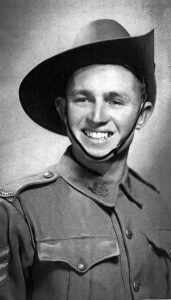 WX1009 HELSIN, John Frederick (Jack or Johnny) Corp. b. 1919 London. Formerly Cottesloe. Fought Singapore. Selected to work Thai-Burma Railway with 3,000 POWs ‘A’ Force Burma, Green Force No. 3 Btn. Worked Burma end railway more than 12 months. ‘Rakuyo’ Maru. Perished 12 Sep 1944 aged 25. John Helsin’s English born mother returned to WA with her baby son following the death of her Australian-born husband who served with 16th Battalion AIF WW1, Corp. John Malmo Nelson (awarded Military Medal) who d. 3 Sep 1918 Rouen, France aged 33. Father and son were each only sons.
WX1009 HELSIN, John Frederick (Jack or Johnny) Corp. b. 1919 London. Formerly Cottesloe. Fought Singapore. Selected to work Thai-Burma Railway with 3,000 POWs ‘A’ Force Burma, Green Force No. 3 Btn. Worked Burma end railway more than 12 months. ‘Rakuyo’ Maru. Perished 12 Sep 1944 aged 25. John Helsin’s English born mother returned to WA with her baby son following the death of her Australian-born husband who served with 16th Battalion AIF WW1, Corp. John Malmo Nelson (awarded Military Medal) who d. 3 Sep 1918 Rouen, France aged 33. Father and son were each only sons.
WX16446 HOBSON, Clifford b. 1905 Leeds, Yorkshire, England. Formerly Kalgoorlie. Fought Singapore. Selected to work Thai-Burma Railway with 3,000 POWs ‘A’ Force Burma, Green Force No. 3 Btn. Worked Burma end railway more than 12 months. ‘Rakuyo’ Maru. Perished 12 Sep 1944 aged 38.
Please read about Cliff Hobson
NX73270 HOWARD, Bernard James b. 1914 Quirindi, NSW. 88thth Light Aid Detachment attached 2/4th. Fought Singapore. Selected to work Thai-Burma Railway with 3,000 POWs ‘A’ Force Burma, Green Force No. 3 Btn. Worked Burma end railway more than 12 months. ‘Rakuyo’ Maru. Perished 12 Sep 1944 aged 29.
HUGHES, Ronald Edward b. 1920 Manjimup. Enlisted 15 Jan 1941. Joined ‘A’ Coy. AWOL when ‘Aquitania’ sailed 16 Jan 1942 Fremantle to Singapore. Sent Java. Captured “Blackforce” Java. Selected to work Thai-Burma Railway with ‘A’ Force Burma, Java Party No, 4 Williams Force. Worked Burma end railway more than 12 months and in Thailand. ‘Rakuyo’ Maru. Perished 12 Sep aged 24.
WX7646 HUTCHISON, Robert Bamford b. 1912 Subiaco. . Fought Singapore. Wounded in action 12 Feb 1944 receiving shrapnel wound to his back. Selected to work Thai-Burma Railway with 3,000 POWs ‘A’ Force Burma, Green Force No. 3 Btn. Worked Burma end railway more than 12 months. ‘Rakuyo’ Maru. Perished 12 Sep 1944 aged 32.
WX5584 McCRACKEN, Ronald Duncan b. 1918 Narrogin. Fought Singapore. Involved in bayonet charge at Hill 200, Ulu Pandan where he was wounded in action. Admitted to 2/10th Australian General Hospital with gunshot wound right foot. Discharged to unit 28 Feb 1942.
Selected to work Thai-Burma Railway with 3,000 POWs ‘A’ Force Burma, Green Force No. 3 Btn. Worked Burma end railway more than 12 months. ‘Rakuyo’ Maru. Perished 15 Sep 1944 aged 24.
WX8760 McMAHON, Thomas Membury b. 1920 Loxton, S.A. Fought Singapore. Wounded in action Ulu Pandan 12 Feb 1942. Admitted to 13th Australian General Hospital with shrapnel wound to his left food. Discharged to unit 24 Feb 1942. Selected to work Thai-Burma Railway with 3,000 POWs ‘A’ Force Burma, Green Force No. 3 Btn. Worked Burma end railway more than 12 months. ‘Rakuyo’ Maru. Perished 14 Sep 1944 aged 24.
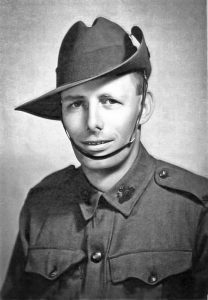
WX7662 MINCHIN, Alec Randolph (Corp) b. 1914 Dangin. Fought Singapore. Selected to work Thai-Burma Railway with 3,000 POWs ‘A’ Force Burma, Green Force No. 3 Btn. Worked Burma end railway more than 12 months. ‘Rakuyo’ Maru. Perished 15 Sep 1944 aged 30.
WX8076 MOORE, Frank Clifford b. 1911 Northam. Formerly Bowgada. Fought Singapore. Selected to work Thai-Burma Railway with 3,000 POWs ‘A’ Force Burma, Green Force No. 3 Btn. Worked Burma end railway more than 12 months. ‘Rakuyo’ Maru. Perished 12 Sep 1944 aged 33.
WX7181 MUTTON, Charles b. 1913 Perth. Enlisted 1 Aug 1940 from Agnew, a goldmining town near Leinster. Scout with ‘D’ Coy. Selected to work Thai-Burma Railway with 3,000 POWs ‘A’ Force Burma, Green Force No. 3 Btn. Worked Burma end railway more than 12 months and in Thailand with Williams Force. ‘Rakuyo’ Maru. Perished 12 Sep 1944 aged 31.
Son of Arthur Stephan Mutton and Bridget Agnes Mutton, of St. Kilda, Victoria. (his father died in 1937)
WX7940 NICHOLSON, Walter George b. 1907 Norwich, England. Fought Singapore. Selected to work Thai-Burma Railway with 3,000 POWs ‘A’ Force Burma, Green Force No. 3 Btn. Worked Burma end railway more than 12 months. ‘Rakuyo’ Maru. Perished 13 Sep 1944 aged 36.
WX7659 NOLAN, Edwin Leslie b. 1910 Durham, England. Formerly Bodalin. Fought Singapore. Selected to work Thai-Burma Railway with 3,000 POWs ‘A’ Force Burma, Green Force No. 3 Btn. Worked Burma end railway more than 12 months. ‘Rakuyo’ Maru. Perished 12 Seo 1844 aged 34.
WX8856 PEARCE, Harry Walter b. 1914 Fremantle. Captured “Blackforce” Java. Selected to work Thai-Burma Railway with ‘A’ Force Burma, Java Party No, 4 Williams Force. Worked Burma end railway more than 12 months and in Thailand on rail link. ‘Rakuyo’ Maru. Perished 12 Sep 1944 aged 30.
WX16356 RANDALL, Ernest Edward b. 1908 Northampton. Fought Singapore. Selected to work Thai-Burma Railway with 3,000 POWs ‘A’ Force Burma, Green Force No. 3 Btn. Worked Burma end railway more than 12 months. ‘Rakuyo’ Maru. Perished 12 Sep 1944 aged 36.
Please read the story of Randall, Cripps & Northampton Boys
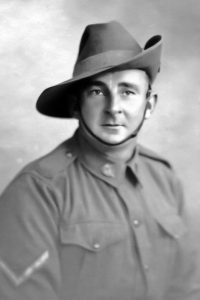 WX9282 SKINNER Francis Kenneth Herbert b 1903 Melbourne. Formerly Koorda. Fought Singapore. Selected to work Thai-Burma Railway with 3,000 POWs ‘A’ Force Burma, Green Force No. 3 Btn. Worked Burma end railway more than 12 months. ‘Rakuyo’ Maru. Perished 12 Sep 1944 aged 40.
WX9282 SKINNER Francis Kenneth Herbert b 1903 Melbourne. Formerly Koorda. Fought Singapore. Selected to work Thai-Burma Railway with 3,000 POWs ‘A’ Force Burma, Green Force No. 3 Btn. Worked Burma end railway more than 12 months. ‘Rakuyo’ Maru. Perished 12 Sep 1944 aged 40.
WX7337 SPOONER, Alex b. 1910 Redhill, Surrey, England. Fought Singapore. Selected to work Thai-Burma Railway with 3,000 POWs ‘A’ Force Burma, Green Force No. 3 Btn. Worked Burma end railway more than 12 months. ‘Rakuyo’ Maru. Perished 14 Sep 1944 aged 33.
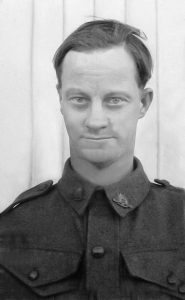
WX15869 STRUTHOFF, Albert John b. 1914 Kojonup. Fought Singapore. Selected to work Thai-Burma Railway with 3,000 POWs ‘A’ Force Burma, Green Force No. 3 Btn. Worked Burma end railway more than 12 months.
Travelled to Saigon with ‘Rakuyo’ Maru Party. Struthoff remained behind due to illness when POWs departed Saigon for Singapore.
Died 19 September 1944 Pneumonia Tan Son Nhut, French Indo-China.
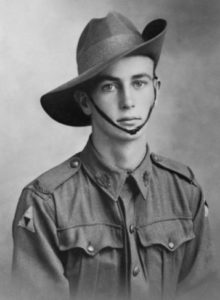
WX6623 THOMAS, David William b. 1919 Perth. Fought Singapore. Selected to work Thai-Burma Railway with 3,000 POWs ‘A’ Force Burma, Green Force No. 3 Btn. Worked Burma end railway more than 12 months. ‘Rakuyo’ Maru. Perished 12 Sep 1944 aged 23.
WX7664 TOMS, Frederick William (Fred) b. 1904 Aldershot, England. Formerly Bonnie Rock. Fought Singapore. Wounded in action Buona Vista 15 Feb 1942. Admitted 2/13th Australian General Hospital with splinter wounds to back. Operated on same day. Discharged to Unit 18 Mar 1942.
Selected to work Thai-Burma Railway with 3,000 POWs ‘A’ Force Burma, Green Force No. 3 Btn. Worked Burma end railway more than 12 months. ‘Rakuyo’ Maru. Perished 14 Sep 1944 aged 40.
WX17863 TRIGWELL, Vernon Chapman b. 1919 Donnybrook. Member of Donnybrook 25th Light Horse Brigade Militia prior enlisting 2/4th 3 Dec 1941. Reinforcement with ‘C’ Coy Selected to work Thai-Burma Railway with 3,000 POWs ‘A’ Force Burma, Green Force No. 3 Btn. ‘Rakuyo’ Maru. Perished 14 Sep 1944 aged 24. Vern’s death two days after Rakuyo Maru was sunk by USS “Sea Lion” was confirmed by his Donnybrook mate Bert Wall WX12989 who was one of the survivors picked up by Imperial Japanese Navy – taken to Japan)
WX7484 TUCKER, William John b. 1906 Northam. Fought Singapore. Selected to work Thai-Burma Railway with 3,000 POWs ‘A’ Force Burma, Green Force No. 3 Btn. Worked Burma end railway more than 12 months. ‘Rakuyo’ Maru. Perished 12 Sep 1944 aged 38.
He was one of 9 children born to Robert Henry Tucker and Jennie Maxwell (Irvine). The Tucker family resided around West Swan/Guildford.
Jack married in 1940. He left his widow Susie and two step-daughters.
WX9292 VENEMORE, Norman James b. 1916 Cottesloe. Formerly Shackleton. Fought Singapore. Selected to work Thai-Burma Railway with 3,000 POWs ‘A’ Force Burma, Green Force No. 3 Btn. Worked Burma end railway more than 12 months. ‘Rakuyo’ Maru. Perished 15 Sep 1944 aged 28.
WX8776 WALSH, Leo Patrick b. 1907 Kalgoorlie. Fought Singapore. Selected to work Thai-Burma Railway with 3,000 POWs ‘A’ Force Burma, Green Force No. 3 Btn. Worked Burma end railway more than 12 months. ‘Rakuyo’ Maru. Perished 12 Sep 1944 aged 36.
